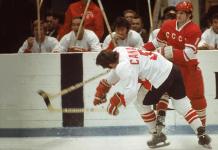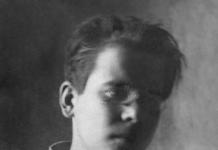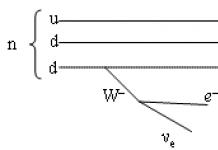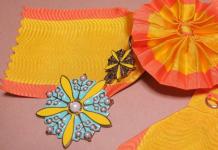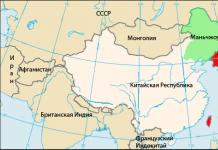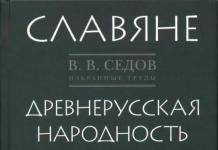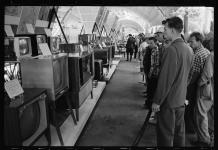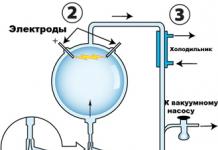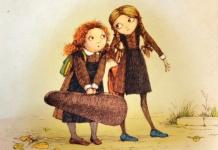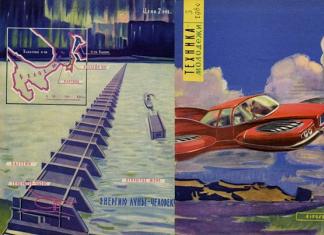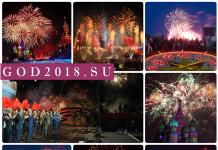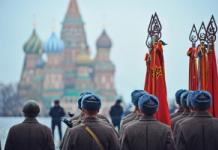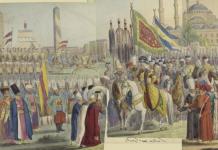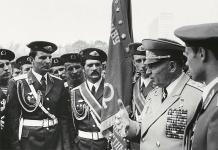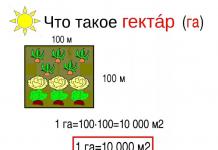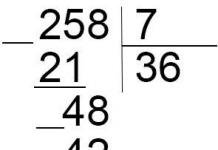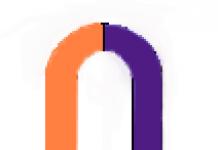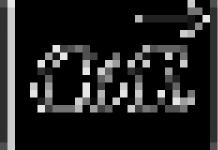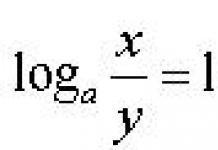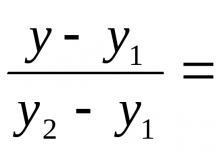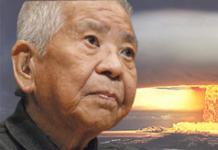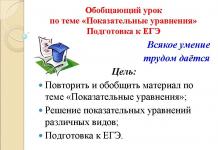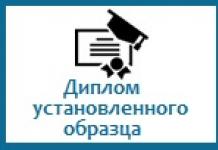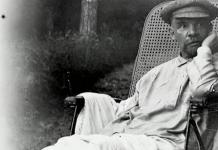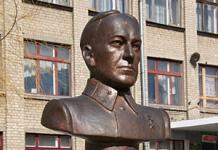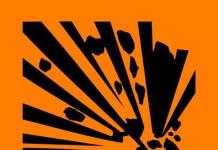He is considered one of the most famous Polish scientists, although he is definitely the property of world science. The scientist who, in the 15th century, managed to go against the teachings of the church and prove that the Earth is far from the center of the world, who was both a canon and a researcher, died without seeing the reaction of the world to his discovery.
Family and childhood
Nicolaus Copernicus was born into a merchant family. His father was a native of Krakow, although his nationality is unknown. The mother was an ethnic German. Nikolai was the fourth child in the family, besides him, his parents had another son and two daughters.
Nikolai received his primary education at a school located not far from his home in Torun.
When he was nine, his father died of the plague, and therefore the mother and her brother took up the upbringing of all the children. He moved his sister's family to Krakow. There Nikolai and his older brother entered the university, Nikolai began to study art, although he was equally interested in mathematics, astronomy, and medicine.

Education and wandering around the world
In 1494, Nikolai graduated from the university without any scientific title. The family decided that it would be best for him to devote himself to religion, especially since his uncle had just received the rank of bishop.
But Copernicus doubted this choice. Therefore, together with his brother, he decided to travel in Italy. As a result, in 1497 he entered the University of Bologna. The most popular at that time was the Faculty of Law, which, moreover, studied canonical and ecclesiastical law. Therefore, Nikolai chose this faculty for himself. Moreover, it was also possible to study astronomy there.
Copernicus spent his first scientific experiment in this area together with the astronomer Domenico Navarra - they realized that the distance from the Earth to the Moon when it is squared is more or less the same: that during the full moon, that during the new moon. Thus, their discovery completely crossed out the theory of Ptolemy.
And while Copernicus was making his first scientific discoveries, his uncle still could not get rid of the idea of promoting him up the career ladder in the clergy. So, in 1498, he was elected in absentia a canon in Warmia. A year later, his older brother Andrzej also became a canon. But this dignity did not help either one brother or another. Bologna was a very expensive city and both guys were almost beggars. Fortunately, another Canon, Bernard Skulteti, came to their aid and helped them financially on several occasions.
In 1500, Nicholas left Bologna and the university, again without a diploma or title. Historians debate the next few years of his life. Some argue that Copernicus went to Rome and taught there at one of the universities, others say that Nikolai returned to Poland for a short time, and then left for Padua, where he studied medicine.
Be that as it may, but in 1503 Copernicus received his doctorate in theology, it happened at the University of Ferrara. For the next three years he lived in the town of Padua, practicing medicine there. But in 1506 he still returned to Poland. They say that the uncle decided to act by cunning: he lied about his illness, thereby summoning Copernicus to Krakow. There Copernicus works as uncle's secretary, teaches astronomy and is engaged in science.


War and defense of Olsztyn
In 1512, Copernicus's uncle died, and he moved to the town of Frombork, where he was appointed canon many years ago. There, in one of the towers of the fortress, he built an observatory for himself and continued his scientific research.
For several years he had been carrying his theory of the astronomical system in his head; he often discussed it with his fellow scientists. A rough draft of his manuscript on the rotation of celestial bodies had been ready for a dozen years, but he was in no hurry to publish it. I was just distributing it among the astronomers I knew.
But Copernicus lived not only by research. In 1516, he took over the duties of the manager of the Olsztyn and Penenzhny districts. But even when three years later his term expired, he still could not fully return to science - there was a war with the crusaders, and he needed to take care of the territory that was entrusted to him - Warmia. Therefore, Copernicus took over the command and organization of the defense of the fortress. Thus, the scientist managed to save Olsztyn from enemy bulk. For his courage, he was appointed Commissar of Warmia in 1521, and two years later - General Administrator of the area - this is the highest position for which anyone could apply. In the same year, after the election of a new bishop, he was entrusted with the post of Chancellor of Warmia, and after that Copernicus was given a little rest and again to engage in scientific work.
Criticism of Ptolemy
Already in the 1520s, Copernicus clearly understood that Ptolemy was wrong: the Earth is not the only planet that moves around the Sun. The only thing where Nikolai himself was mistaken - he believed that the stars themselves are motionless. But here the explanation is quite simple: at that time there were no such powerful telescopes to catch the movement of stars in the sky.
Rumors spread throughout Europe about a new scientist who is rediscovering the world. Almost all famous scientists of the world spoke about its heliocentric system. Although the work on "On the Rotation of the Celestial Spheres" lasted quite a long time - almost 40 years, Copernicus was constantly refining something, making new calculations.


The last years of life and death
In 1531, the already middle-aged Copernicus retired from all affairs in order to devote himself only to science. His health worsened every year. Nevertheless, he still found the strength to practice medicine for free.
In 1542, Copernicus was paralyzed - the right side of the body was taken away. He died at the age of 70 from a stroke. Some of his contemporaries argued that he managed to see published his greatest work - on the heliocentric system, although biographers say that this is impossible, since the scientist was in a coma for many weeks before his death.
In 2005, unknown remains were found, which after DNA analysis with two hairs of Copernicus turned out to be his skull and bones. In 2010, they were reburied in Frombork Cathedral.
Scientific achievements
Copernicus proved that the planets move around the sun, and not vice versa, as was commonly believed. In addition, he read that it is the Sun that is the center of the world. The motions of the planets, as Copernicus believed, are not uniform and not the same.
Only a few years after the death of the scientist, the church realized that his work denied some dogmas of the sacred letter, and only then they began to confiscate and burn it.
Nicolaus Copernicus was one of the first to voice the theory of universal gravitation.
The scientist also noticed such a phenomenon, which eventually became known as the Copernican-Gresham law, when people accumulate savings in a more valuable currency, and use a cheaper one in everyday life. At that time, it was about gold and copper.
- Only in the 19th century were monuments erected to Copernicus in Warsaw, Krakow, Torun and Regensburg, later also in Olsztyn, Gdansk and Wroclaw. On the central square of Polish Torun there is a monument to Copernicus, on which there is an inscription: "He who stopped the Sun - moved the Earth."
- In honor of Copernicus, Chemical element No. 112 is named - "Copernicus", the minor planet (1322) Copernicus (Coppernicus), craters on the Moon and on Mars.
- In 1973, the 500th anniversary of Copernicus was celebrated worldwide, 47 countries issued about 200 stamps and postage blocks (even the Vatican issued four stamps). Another jubilee came in 1993 (the 450th anniversary of his death) 15 countries celebrated it by issuing about 50 stamps and postage blocks.
- There is a version, not documented, that Pope Leo X invited Copernicus to take part in the preparation of the calendar reform (1514, implemented only in 1582), but he politely refused.
(1473-1543) Polish astronomer
Nicolaus Copernicus was born in the Polish city of Torun into the family of a merchant who came from Germany. He was orphaned early and was brought up in the house of his uncle, the famous Polish humanist Bishop Lukasz Wachenrode. In 1490 he graduated from the University of Krakow and became a canon of the cathedral in Frombork, a fishing town at the mouth of the Vistula. He remained in this position (with interruptions) until the end of his life.
In 1496 Copernicus embarked on a long journey to Italy. Initially, he studied at the University of Bologna, where he became a master of arts and also studied ecclesiastical law. It was in Bologna that he developed an interest in astronomy, which determined his scientific destiny.
Then he returned to Poland for a short time, but soon went back to Italy, where he studied medicine at the University of Padua and received a doctorate in theology from the University of Ferrara. Nicolaus Copernicus returned to his homeland in 1503 as a comprehensively educated person. He settled first in the city of Lidzbark, where he served as a secretary and doctor for his uncle, and after his death he moved to Frombork, where he lived until the end of his life.
Nicolaus Copernicus was an amazingly versatile scientist. Along with his studies in astronomy, he was engaged in the translation of the works of Byzantine authors, as well as medicine, earning a reputation as a wonderful doctor. Copernicus treated the poor free of charge: day and night, he was ready to rush to help the patient. In addition, he participated in the management of the region, was in charge of its financial and economic affairs. But most of all he was interested in astronomy, which he represented somewhat differently than it was accepted.
By that time, almost one and a half millennia existed the system of the structure of the world, proposed by the ancient Greek scientist Claudius Ptolemy. It consisted in the fact that the Earth is motionless at the center of the Universe, and the Sun and other planets revolve around it. Ptolemy's theory did not allow explaining many phenomena well known to astronomers, in particular the loop-like motion of planets in the visible firmament. Nevertheless, its provisions were considered unshakable, since they were in good agreement with the teachings of the Catholic Church.
Long before Copernicus, the ancient Greek scientist Aristarchus argued that the earth moves around the sun. But he still could not experimentally confirm his teaching.
Observing the movement of heavenly bodies, Nicolaus Copernicus came to the conclusion that Ptolemy's theory is incorrect. After thirty years of hard work, long observations and complex mathematical calculations, he convincingly proved that the Earth is only one of the planets and that all the planets revolve around the Sun. True, Copernicus still believed that the stars are motionless and are located on the surface of a huge sphere, at a huge distance from the Earth. This was due to the fact that at that time there were no such powerful telescopes with which one can observe the sky and the stars.
Having discovered that the Earth and the planets are satellites of the Sun, Nicolaus Copernicus was able to explain the apparent movement of the Sun in the sky, the strange entanglement in the movement of some planets, as well as the apparent rotation of the firmament. He believed that we perceive the movement of celestial bodies in the same way as the movement of various objects on Earth when we ourselves are in motion. When we sail in a boat on the surface of the river, it seems that the boat and we are motionless in it, and the banks are floating in the opposite direction. In the same way, to an observer on Earth, it seems that the Earth is stationary, and the Sun is moving around it. In fact, this Earth moves around the Sun and makes a complete revolution in its orbit during the year.
Somewhere between 1510 and 1514, Nicolaus Copernicus wrote a short message in which he first informed scientists about his discovery. It gave the impression of an exploding bomb and caused misfortune not only for its author, but also for his followers. To accept such a theory was to destroy the authority of the church, since this concept refuted the theory of the divine origin of the universe.
Copernicus's theory was fully set forth in his work "On the revolutions of the heavenly spheres." The author did not live to see the time when this book spread throughout the world. He was dying when friends brought him the first copy of his book, printed in one of the Nuremberg printers. His book sparked interest among progressive-minded scholars.
The church figures did not immediately understand what a blow to religion was dealt by the book of Copernicus. For some time, his work was freely distributed among scientists. Only when Nicolaus Copernicus had followers, his teaching was declared heresy, and the book was included in the "Index of Forbidden Books". Only in 1835 did the Pope exclude the book of Copernicus from this index and thus, as it were, recognized the existence of his teaching in the eyes of the church.
In 1600, the Italian scientist Giordano Bruno was burned at the stake for promoting Copernicus's views. But this could not stop the development of science.
Soon after the death of Nicolaus Copernicus, the Italian astronomer Galileo Galilei established that the Sun also rotates on its axis, thereby confirming the correctness of the conclusions of the Polish scientist.
Obviously, the laws discovered by Copernicus contributed to the further development of astronomy, in which more and more discoveries are still taking place.
Nicolaus Copernicus.
Based on the original from the Royal Observatory in Berlin.
Copernicus (Kopernik, Copernicus) Nicholas (1473-1543), Polish astronomer, creator of the heliocentric system of the world. He made a revolution in natural science, abandoning the doctrine of the central position of the Earth, accepted for many centuries. He explained the visible movements of the celestial bodies by the rotation of the Earth around the axis and the revolution of the planets (including the Earth) around the Sun. He expounded his teaching in the essay "On the Conversions of the Heavenly Spheres" (1543), prohibited by the Catholic Church from 1616 to 1828.
Copernicus (Kopernik, Copernicus), Nicholas (1473-1543) - Polish astronomer and thinker. From criticism and denial of the truth of the geocentric system of the world canonized by the church, Copernicus gradually came to the approval of a new system of the world, according to which the Sun occupies a central position, and the Earth is one of the planets revolving around the Sun, and revolves around its axis. The main work of Copernicus is "On the Rotations of the Celestial Bodies" (1543, Russian translation, 1964).
Philosophical dictionary / author-comp. S. Ya. Podoprigora, A. S. Podoprigora. - Ed. 2nd, erased. - Rostov n / a: Phoenix, 2013, p. 176.
Copernicus Nicholas (1473-1543) - Polish astronomer, creator of the heliocentric system of the world, economist. In the history of science, the teachings of Copernicus were a revolutionary act by which the study of nature declared its independence from religion. Copernicus' theory of the Earth's revolution around the Sun and the daily rotation of the Earth around its axis meant a break with the geocentric system of Ptolemy and the religious ideas based on it about the Earth as a "chosen by God" arena in which the struggle of divine and devilish forces for human souls is played out. This theory has discarded what comes from Aristotle and the opposition of the movements of heavenly and earthly bodies used by scholasticism, struck a blow to the church legend of heaven and hell, created the possibility of the emergence in the future of teachings about the natural origin and development of the solar system. For the theory of knowledge, Copernicus's distinction between visible (apparent) and real states of bodies (Earth) became important. Copernicus's discoveries became the object of a fierce struggle: the church condemned and persecuted them, the progressive thinkers of his time and subsequent eras made them their battle banner, developed further ( Bruno , Galileo and others), eliminating, for example, such erroneous positions of the Copernican system, such as the location of all stars on a single "sphere" and the Sun in the center of the universe. The main works of Copernicus, "On the revolutions of the heavenly spheres" (1543), testifies to Copernicus's acquaintance with the achievements of ancient atomism and astronomical hypotheses of the ancients (Heliocentric and geocentric systems of the world).
Philosophical Dictionary. Ed. I.T. Frolov. M., 1991, p. 204.

Copernicus (Kopernik, Copernicus) Nicholas (February 19, 1473, Torun, Poland - May 24, 1543, Frombork) - Polish astronomer and thinker who revived and scientifically substantiated the heliocentric system of the world. He studied mathematics, theoretical foundations of astronomy, medicine at the University of Krakow (1491-95), studied at the Faculty of Church Law at the University of Bologna (1496-1501), where he also studied astronomy and participated in the research of the famous astronomer Domenico de Novara. He studied medicine at the University of Padua, in Ferrara received a doctorate in canon law (1503). He performed numerous duties: canon in Frombork, Chancellor of the Warmia Chapter, initiator of monetary reform. In addition, he organized defense against attacks by soldiers of the Teutonic Order, as a doctor participated in the fight against the epidemic of 1519, lectured on mathematics, and published translations. At the same time, Copernicus was constantly engaged in astronomical observations and mathematical calculations of the motion of the planets and by 1532 had completed the work "On the Circulation of the Celestial Spheres", which he did not dare to publish for a long time, although he was convinced of the fallacy of Ptolemy's system and the truth of the heliocentric model of the Universe. The work came out only in 1543, the year of his death. From 1616 to 1882, at the request of the Vatican, Copernicus' work was in the Index of Prohibited Publications. The main work was preceded by the Small Commentary (1505-07), which outlined the basic assumptions of heliocentrism. All spheres move around the Sun as the center of the world, the center of the Earth is the center of gravity and the lunar orbit, all movements of the "firmament", the Sun and the planets belong not to them, but to the Earth. These provisions are developed in detail in the main work of Copernicus, where it is substantiated that the Earth, together with other planets, revolves around the Sun in the plane of the ecliptic, around its axis perpendicular to the plane of the ecliptic, and around its own axis, perpendicular to the plane of the equator. In addition, it is proved that the world and the Earth are spherical, the movement of celestial bodies is circular and constant, the Earth occupies only a small part of the infinitely large space of heaven. According to T. Kuhn, Copernicus's innovation was not just an indication of the movement of the Earth, but constituted a new way of seeing the problems of physics and astronomy, in which the meaning of the concepts of "earth" and "motion" must be changed (see Kuhn T. Structure of scientific revolutions. M. , 1975, p. 190).
L. A. Mikeshina
New Philosophical Encyclopedia. In four volumes. / Institute of Philosophy RAS. Scientific ed. advice: V.S. Stepin, A.A. Guseinov, G.Yu. Semigin. M., Thought, 2010, vol. II, E - M, p. 309-310.
Copernicus (Kopernik, Copernicus) Nicholas (19.2. 1473, Torun, -24.5.1543, Frombork), Polish astronomer and thinker. In the main work of Copernicus "On the Rotations of the Celestial Spheres" (1543, Russian translation, 1964), the long and firmly forgotten ancient idea of heliocentrism (Aristarchus of Samos, 3rd century BC) is revived, developed, proved and substantiated as a scientific truth ... From a scientific point of view, the advantages of heliocentrism are immediately apparent: for the first time in the history of astronomy, it is possible to determine the actual planetary distances from observations; specific mathematical and geometric features of Ptolemy's scheme (which were previously incomprehensible and accidental) acquire a clear physical meaning; the new system of the world makes a strong aesthetic impression, establishing the actual "form of the world and the exact proportionality of its parts" ("On rotations ...", p. 13). Copernicus' doctrine refuted the centuries-old geocentric tradition of Aristotle - Ptolemy, dealt a decisive blow to the religious and theological ideas about the Universe and the place of man in it, served as the starting point for the development of new astronomy and physics (in the works of Galileo, Kepler, Descartes, Newton). Engels called the publication of the main work of Copernicus "a revolutionary act by which the study of nature declared its independence ... From here the liberation of natural science from theology begins its chronology ..." (K. Marx and F. Engels, Soch., Vol. 20, p. 347). In philosophical terms, the transition to heliocentrism means a revolution in epistemology, the basis of natural science knowledge. Up to Copernicus, epistemology prevailed, the attitude according to which the visible was identified with the real. In Copernicus's teachings, the opposite principle is realized for the first time - the visible is not certainty, but the "inverted" reflection of the reality hidden behind the phenomena. In the future, this principle becomes epistemology, the basis of all classical science.
Philosophical Encyclopedic Dictionary. - M .: Soviet encyclopedia. Ch. edition: L. F. Ilyichev, P. N. Fedoseev, S. M. Kovalev, V. G. Panov. 1983.
Compositions: Opera omnia, t. l-2, Warsz., 1972-75; in Russian lane - in collection: Polsk. thinkers of the Renaissance, M., I960, p. 35-68.
Literature: Nicolaus Copernicus. [Sat]. To the 500th anniversary of his birth. 1473-1973, Moscow, 1973 (literary about K. published in Russia and in the Soviet Union); Veselovsky I.I., Bely Yu.A., Nikolay K., M., 1974; Idelson N.I., Studies on the history of celestial mechanics, M., 1975; Kühn T. S., The copernican revolution, Camb. 1957; B l s k u p M., D o b r z y with k i J., Mikolaj Kopernik-uczony i obywatet, Warsz., 1972.
Nicolaus Copernicus was born on February 19, 1473 in the Polish city of Torun in the family of a merchant who came from Germany. He was the fourth child in the family. He received his primary education, most likely at the school at the church of St. Yana. After the death of Nicolaus Copernicus, the father, during the plague, Lukash Vachenrode, the mother's brother, took over the care of his nephew.
In the second half of October 1491, Nicolaus Copernicus, together with his brother Andrzej, arrived in Krakow and enrolled in the Faculty of Arts of the local university.
In 1496, Nikolai, together with his brother Andrzej, ended up in Bologna, then part of the Papal States and famous for its university. Nikolai enrolled in the Faculty of Law with departments of civil and canonical, i.e. ecclesiastical, law. On March 9, 1497, together with the astronomer Domenico Maria Novara, Nicholas made his first scientific observation.
In 1498, Nicolaus Copernicus was confirmed in absentia as a canon of the Frombork chapter.
Then Nikolai returned to Poland for a short time, but just a year later he again went to Italy, where he studied medicine at the University of Padua and received a doctorate in theology at the University of Ferrara. Copernicus returned to his homeland at the end of 1503 as a comprehensively educated person. He settled first in the city of Lidzbark, and then took the post of canon in Frombork, a fishing town at the mouth of the Vistula.
In Frombork, Copernicus launched his astronomical observations, despite the inconvenience of frequent fogs from the Vistula Lagoon.
The most famous instrument used by Copernicus was the triquetrum, a parallax instrument. The second device used by Copernicus to determine the angle of inclination of the ecliptic, "horoscopies", a sundial, a kind of quadrant.
In the "Small Commentary", written around 1516, Copernicus gave a preliminary presentation of his doctrine, or rather his hypotheses.
In the midst of the war with the crusaders, at the beginning of November 1520, Copernicus was elected administrator of the chapter's holdings in Olsztyn and Penzno. Taking command of the small garrison of Olsztyn, Copernicus took measures to strengthen the defense of the castle-fortress and managed to defend Olsztyn. Soon after the conclusion of the armistice in April 1521, Copernicus was appointed Commissioner of Warmia, and in the fall of 1523 - Chancellor of the Chapter. ...
By the beginning of the thirties, work on the creation of a new theory and its formalization in the work "On the revolutions of the heavenly spheres" was basically completed. By that time, almost one and a half millennia existed the system of the structure of the world, proposed by the ancient Greek scientist Claudius Ptolemy. It consisted in the fact that the Earth is motionless at the center of the Universe, and the Sun and other planets revolve around it. The provisions of Ptolemy's theory were considered unshakable, since they were in good agreement with the teachings of the Catholic Church.
Observing the movement of heavenly bodies, Copernicus came to the conclusion that Ptolemy's theory is wrong. After thirty years of hard work, long observations and complex mathematical calculations, he proved that the Earth is only one of the planets and that all the planets revolve around the Sun.
Copernicus believed that a person perceives the movement of celestial bodies in the same way as the movement of various objects on Earth when he himself is in motion. To an observer on Earth, it seems that the Earth is motionless, and the Sun is moving around it. In fact, this Earth moves around the Sun and makes a complete revolution in its orbit during the year.
Copernicus was dying when friends brought him the first copy of "On the Conversions of the Celestial Spheres", printed in one of the Nuremberg printers.
For some time, his work was freely distributed among scientists. It was only when Copernicus had followers that his teaching was declared heresy, and the book was included in the "Index" of forbidden books.
Reprinted from the site http://100top.ru/encyclopedia/
Read on:
World renowned scientists(biographical reference).
Compositions:
Opera omnia, t. 1-2. Warsz., 1972-1975;
On the rotations of the celestial spheres. M., 1964.
Literature:
Nicolaus Copernicus. To the 500th anniversary of his birth, ed. V.A.Kotelnikov. M., 1973;
Veselovsky I.N., Bely Yu.A. Nikolai Copernicus. M., 1974;
Kuhn T. S. The Coperniean Revolution. Cambr. (Mass.), 1957.
Nicolaus Copernicus is an outstanding Polish astronomer of the Renaissance, mathematician, theologian, and physician. The scientist refuted the theory put forward by the ancient Greeks, according to which the planets and the Sun revolve around the Earth, created and substantiated a new, heliocentric theory of the world order.
Nicolaus Copernicus was the fourth child in the family of German woman Barbara Watzenrode and Nicolaus Copernicus, a merchant from Krakow. Over the years, the borders of states and the names have changed many times, so the question of where, in which country the scientist was born, often arises. It happened in the Prussian city of Thorne on February 19, 1473. Today the town is called Torun and is located on the territory of modern Poland.
Nicholas had two older sisters, one later became a nun, and the other got married and left the city. The elder brother Andrzej became a faithful companion and companion of Nicholas. Together they traveled half of Europe, studying at the best universities.
Copernicus lived in prosperity and prosperity as long as the father of the family was alive. When Nikolai was nine years old, a plague epidemic broke out in Europe, claiming tens of thousands of lives. Copernicus the elder also fell victim to a terrible disease, and a few years later, in 1489, his mother also died. The family was left without a livelihood, and the children were orphans. Everything could have ended in tears, if not for the uncle, brother of Barbara, Lukasz Watzenrode, canon of the local diocese.

Being educated at that time, Luca had a master's degree from the Cracow Jagiellonian University and a doctor of canon law from the University of Bologna, and later served as a bishop. Luka took care of the children of his deceased sister and tried to educate Nikolai and Andrzej.
After Nikolai graduated from the local school in 1491, the brothers, under the patronage and at the expense of their uncle, went to Krakow, where they entered the Faculty of Arts at the Jagiellonian University. This event marked the beginning of a new stage in the biography of Copernicus, the first on the road to future great discoveries in science and philosophy.
The science
After graduating from the University of Krakow in 1496, the Copernican brothers set off on a trip to Italy. It was originally planned to receive funds for the trip from his uncle, Bishop of Emerland, but he did not have free money. Luke invited his nephews to become canons of his own diocese and, on the received salary, go to study abroad. In 1487, Andrzej and Nicholas were hired in absentia as canons with an advance salary and a three-year leave of absence for training.
The brothers entered the University of Bologna at the Faculty of Law, where they studied church canon law. In Bologna, fate brought Nicholas together with the teacher of astronomy, Domenico Maria Novara, and this meeting was decisive for the young Copernicus.

Together with Novara in 1497, the future scientist made the first astronomical observation in his life. The result was the conclusion about the same distance to the moon in square, with a new moon and a full moon. This observation for the first time made Copernicus question the truth of the theory that all celestial bodies revolve around the Earth.
In addition to studying works on law, mathematics and astronomy in Bologna, Nicholas studied Greek and was fond of painting. A painting that is considered a copy of Copernicus's self-portrait has survived to this day.

After studying in Bologna for three years, the brothers left the university and for some time returned to their homeland in Poland. In the city of Frauenburg, at the place of service, Copernicus asked for a reprieve and a few more years to continue training. According to some reports, during this period Nicholas lived in Rome and lectured on mathematics to noble dignitaries from high society, and Borgia helped Pope Alexander VI to master the laws of astronomy.
In 1502 the Copernican brothers came to Padua. At the University of Padua, Nicholas acquired fundamental knowledge and practical experience in medicine, and at the University of Ferrara received his doctorate in theology. As a result of this extensive training, Copernicus returned home in 1506 as a fully educated adult.
 "Copernicus. Conversation with God". Artist Jan Matejko
"Copernicus. Conversation with God". Artist Jan Matejko By the time he returned to Poland, Nikolai was already 33 years old, and his brother Andrzej was 42 years old. At that time, this age was considered generally accepted for obtaining university degrees and completing education.
Further activities of Copernicus are associated with his post of canon. The brilliant scientist managed to make a career as a clergyman, while simultaneously doing scientific research. He was lucky that the works were completed only at the end of his life, and the books were published after his death.
Copernicus happily escaped the persecution of the church for radical views and the doctrine of the heliocentric system, which his followers and followers did not succeed in, and. After the death of Copernicus, the main ideas of the scientist, reflected in the work "On the Rotations of the Celestial Spheres", freely spread throughout Europe and the world. It wasn't until 1616 that this theory was declared heresy and banned by the Catholic Church.
Heliocentric system
Nicolaus Copernicus was one of the first to think about the imperfection of the Ptolemaic system of the universe, according to which the Sun and other planets revolve around the Earth. Using primitive astronomical instruments, partly home-made, the scientist was able to deduce and substantiate the theory of a heliocentric solar system.

At the same time, until the end of his life, Copernicus believed that distant stars and luminaries visible from Earth are fixed on a special sphere surrounding our planet. This delusion was caused by the imperfection of the technical means of that time, because even the simplest telescope did not exist in Renaissance Europe. Some details of Copernicus' theory, in which the ancient Greek astronomers were of the opinion, were subsequently eliminated and refined by Johannes Kepler.
The main work of the scientist's entire life was the fruit of thirty years of work and was published in 1543 with the participation of Copernicus's favorite disciple, Reticus. The astronomer himself had the good fortune to hold in his hands a published book on the eve of his death.

The work dedicated to Pope Paul III was divided into six parts. The first part talked about the spherical shape of the Earth and the entire universe, the second told about the basics of spherical astronomy and the rules for calculating the location of stars and planets in the firmament. The third part of the book is devoted to the nature of the equinoxes, the fourth to the Moon, the fifth to all the planets, and the sixth to the reasons for changing latitudes.
Copernicus' doctrine is a great contribution to the development of astronomy and the science of the universe.
Personal life
From 1506 to 1512, during the life of his uncle, Nicholas served as a canon in Frombork, then became an adviser to the bishop, and then - chancellor of the diocese. After the death of Bishop Luke, Nicholas moved to Fraenburg and became a canon of the local cathedral, and his brother, who fell ill with leprosy, left the country.
In 1516, Copernicus received the post of Chancellor of the Warmia Diocese and moved to the city of Olsztyn for four years. Here the scientist was found by the war that Prussia was waging with the knights of the Teutonic Order. The churchman showed himself to be a surprisingly competent military strategist, having managed to provide proper defense and defense of the fortress, which withstood the onslaught of the Teutons.

In 1521 Copernicus returned to Frombrok. He practiced medicine and was known as a skilled physician. According to some reports, Nicolaus Copernicus saved from ailments and eased the fate of many sick, mostly his fellow canons.
In 1528, in his declining years, the astronomer first fell in love. The scientist's chosen one was the young girl Anna, the daughter of Copernicus's friend, metal carver Matz Schilling. The acquaintance took place in the hometown of the scientist, Torun. Since Catholic priests were forbidden to marry and have ties with women, Copernicus settled Anna as a distant relative and housekeeper.
However, soon the girl had to leave first from the house of the scientist, and then completely leave the city, since the new bishop made it clear to his subordinate that the church did not welcome such a state of affairs.
Death
In 1542 in Wittenberg was published the book of Copernicus "On the sides and angles of triangles, both flat and spherical." The main work was published in Nuremberg a year later. The scientist was dying when his disciples and friends brought the first printed copy of the book "On the Rotation of the Celestial Spheres." The great astronomer and mathematician died at his home, in Frombork, surrounded by loved ones on May 24, 1543.

Copernicus' posthumous fame corresponds to the merits and achievements of the scientist. Thanks to portraits and photographs, the face of the astronomer is known to every schoolchild, monuments are in different cities and countries, and the University of Nicolaus Copernicus in Poland is named in his honor.
Copernicus' discoveries
- creation and substantiation of the theory of the heliocentric system of the world, which marked the beginning of the first scientific revolution;
- development of a new monetary system in Poland;
- the construction of a hydraulic machine to supply water to all houses in the city;
- co-author of the economic law of Copernicus-Gresham;
- calculation of the real motion of the planets.
(1473 —1543 )
Nicolaus Copernicus was born on February 19, 1473 in the Polish city of Torun in the family of a merchant who came from Germany. He was the fourth child in the family. He received his primary education, most likely, in a school located near the house at the Church of Yan. Until the age of ten, he grew up in an atmosphere of well-being and contentment. The carefree childhood ended abruptly and early enough. barely ten years passed, as a "pestilence" - a plague epidemic, a frequent visitor and a formidable scourge of mankind at that time, visited Torun, and one of his first victims was Nikolai Copernicus, the father. Lukasz Vachenrode, the mother's brother, took care of his nephew's education and fate.
In the second half of October 1491, Nicolaus Copernicus, together with his brother Andrzej, arrived in Krakow and enrolled in the Faculty of Arts of the local university. Upon its completion in 1496, Copernicus set off on a long journey to Italy.
In the fall, Nikolai, along with his brother Andrzej, ended up in Bologna, which was then part of the Papal Region and famous for its university. At that time, the Faculty of Law with departments of civil and canonical, i.e. ecclesiastical, law was especially popular here, and Nikolai signed up for this faculty. Copernicus developed an interest in astronomy, which determined his scientific interests. On the evening of March 9, 1497, together with the astronomer Domenico Maria Novara, Nicholas made his first scientific observation.After him, it became clear that the distance to the moon when ° is in square is about the same as during the new or full moon. The discrepancy between Ptolemy's theory and the discovered facts amused to think ...
In the first months of 1498, Nicolaus Copernicus was confirmed in absentia as a canon of the Frombork chapter, and a year later Andrzej Copernicus became canon of the same chapter. cheapness, and in October 1499 Copernicus found themselves completely without means of subsistence. Canon Bernard Skulteti, who had come from Poland, who later met more than once in their life, helped them out.
Then Nicholas returned to Poland for a short time, but just a year later he went to Italy again, where he studied medicine at the University of Padua and received a doctorate in theology at the University of Ferrara. Copernicus returned to his homeland at the end of 1503 as a fully educated man.He settled first in the city of Lidzbark. and then took the post of canon in Frombork - a fishing town at the mouth of the Vistula Astronomical observations, begun by Copernicus in Italy, were continued, albeit on a limited scale, in Lidzbark But with particular intensity he deployed them in Frombork, despite the inconvenience due to the great latitude of this place, which made it difficult to observe the planets, and because of the frequent fogs from the Vistula Lagoon, significant clouds and cloudy skies over this northern area.
It was still far from the invention of the telescope, and Tycho Brahe's best instruments for pre-telescopic astronomy did not exist, with the help of which the accuracy of astronomical observations was brought to one or two minutes.The most famous instrument used by Copernicus was the triquetrum, a parallax instrument The second instrument used by Copernicus to determine the angle of inclination of the ecliptic, "horoscopies", sundial, a kind of quadrant.
Despite the obvious difficulties, in the "Small Commentary", written around 1516, Copernicus had already given a preliminary presentation of his doctrine, or rather, his hypotheses at that time. 1516 Nicolaus Copernicus was elected to the post of manager of the holdings of the chapter in Olsztyn and Penenzhny districts In the fall of 1519, Copernicus's powers in Olsztyn expired, and he returned to Frombork, but surrendered to astronomical observations to test his hypotheses, and this time he really could not. The war was going on with the crusaders.
In the midst of the war, at the beginning of November 1520, Copernicus was re-elected administrator of the chapter's holdings in Olsztyn and Penzno.By that time, Copernicus was the eldest not only in Olsztyn, but throughout Warmia - the bishop and almost all members of the chapter, having left Warmia, were hiding in safe places Taking command of the small garrison of Olsztyn, Copernicus took measures to strengthen the defense of the castle-fortress, taking care of installing guns, creating a stock of ammunition, provisions and water, Copernicus, unexpectedly showing decisiveness and remarkable military talent, managed to defend himself from the enemy.
Personal courage and determination did not go unnoticed - soon after the conclusion of the armistice in April 1521, Copernicus was appointed commissar of Warmia In February 1523, before the election of a new bishop, Copernicus was elected general administrator of Varnia - this is the highest position that he had to occupy in the autumn of the same year, after election of the bishop, he is appointed by the chancellor of the chapter. Only after 1530 the administrative activities of Copernicus narrowed somewhat.

Nevertheless, it was in the twenties that a significant part of the astronomical results of Copernicus fell. Many observations were made. So, around 1523, observing the planets at the moment of opposition, that is, when the planet is in the opposite direction to the Sun
point of the celestial sphere, Copernicus made an important discovery, he refuted the opinion that the position of planetary orbits in space remains stationary.The apse line - a straight line connecting the points of the orbit at which the planet is closest to the Sun and farthest from it, changes its position in comparison with that observed for 1300 years before and recorded in the "Almagest" of Ptolemy. But most importantly, by the beginning of the thirties, the work on the creation of a new theory and its formulation in his work "On the Reversions of the Celestial Spheres" was basically completed. By that time, the system of ordering the world, proposed by the ancient Greek scientist Claudius Ptolemy, existed for almost one and a half millennia. The Earth rests motionless in the center of the Universe, and the Sun and other planets revolve around it Ptolemy's theory did not allow explaining many phenomena well known to astronomers, in particular the loop-like motion of planets in the visible sky.But its positions were considered unshakable, since they were in good agreement with the teachings of the Catholic Church Long before Copernicus, the ancient Greek scientist Aristarchus argued that the Earth moves around the Sun But he still could not experimentally confirm his doctrine.
Observing the movement of celestial bodies, Copernicus came to the conclusion that Ptolemy's theory is incorrect After thirty years of hard work, long observations and complex mathematical calculations, he convincingly proved that the Earth is only one of the planets and that all the planets revolve around the Sun True, Copernicus is still believed that the stars are stationary and are on the surface of a huge sphere, at a huge distance from the Earth. This was due to the fact that at that time there were no such powerful telescopes with which one can observe the sky and the stars. Having discovered that the Earth and the planets are satellites of the Sun, Copernicus was able to explain the apparent movement of the Sun in the sky, the strange entanglement in the movement of some planets, as well as the apparent rotation of the firmament. Copernicus believed that we perceive the movement of celestial bodies in the same way as the movement of various objects on Earth when we ourselves are in motion. When we sail in a boat on the surface of the river, it seems that the boat and we are motionless in it, and the banks are floating in the opposite direction. In the same way, to an observer on Earth, it seems that the Earth is stationary, and the Sun is moving around it. In fact, this Earth moves around the Sun and makes a complete revolution in its orbit during the year.
In the twenties, Copernicus acquired the fame of a skillful doctor. The knowledge he acquired in Padua, he replenished throughout his life, regularly getting acquainted with the latest medical literature. and Ducal Prussia, Tideman Giese, Alexander Skulteti, many canons of the Warmia chapter. He often helped ordinary people. There is no doubt that the recommendations of their predecessors
Copernicus used creatively, carefully monitoring the condition of patients and trying to delve into the mechanism of action of the drugs prescribed by him.
After In 1531, his activity in the affairs of the chapter and his social activities began to decline, although as early as 1541 he served as chairman of the construction fund of the chapter. Long years of his life affected. 60 years is an age that in the 16th century was already considered quite old. But the scientific activity of Copernicus did not stop. He did not stop his medical practice, and his fame as a skilled physician steadily increased. In mid-July 1528, while being present as a representative of the Frombork Chapter at the Seimik in Toruń, Copernicus met the then famous medalist and metal cutter Matz Schilling, who had moved not so long ago to Torun from Krakow. There is an assumption that Copernicus knew Schilling even from Krakow, more Moreover, on the maternal side, he was distantly related to him.
In the house of Schilling, Copernicus met his daughter, a young and beautiful Anna, and soon, compiling one of his astronomical tables, in the heading of the column assigned to the planet Venus, Copernicus outlines the sign of this planet with an outline of ivy leaves - the Schilling family mark that was placed on all coins and medals minted by Anna's father ... As a canon, Copernicus had to observe celibacy - a vow of celibacy. But over the years Copernicus felt more and more alone, more and more clearly felt the need for a close and devoted being, and now a meeting with Anna ...
The years passed. It seemed they were accustomed to Anna's presence in Copernicus' house. However, a denunciation to the newly elected bishop followed. During his illness, Dantiscus summons Doctor Nicholas to him and in a conversation with him, as if by chance, remarks that it is not proper for Copernicus to have such a young and so distant relative with him - one should look for a less young and more closely related one.

And Copernicus is forced to "take action." Anna will soon move to her house. And then she had to leave Frombork. This undoubtedly darkened the last years of the life of Nicolaus Copernicus. In May 1542, in Wittenberg, Copernicus's book "On the sides and angles of triangles, both flat and spherical," with detailed tables of sines and cosines, was published.
But the scientist did not live to see the time when the book "On the Rotations of the Celestial Spheres" spread throughout the world. He was dying when friends brought him the first copy of his book, printed in one of the Nuremberg printers. Copernicus died on May 24, 1543.
The church figures did not immediately understand what a blow to religion was dealt by the book of Copernicus. For some time, his work was freely distributed among scientists. Only when Copernicus had followers, his teaching was declared heresy, and the book was included in the "Index" of prohibited books. Only in 1835 did the Pope exclude Copernicus's book from him and thus, as it were, recognized the existence of his teaching in the eyes of the church.

